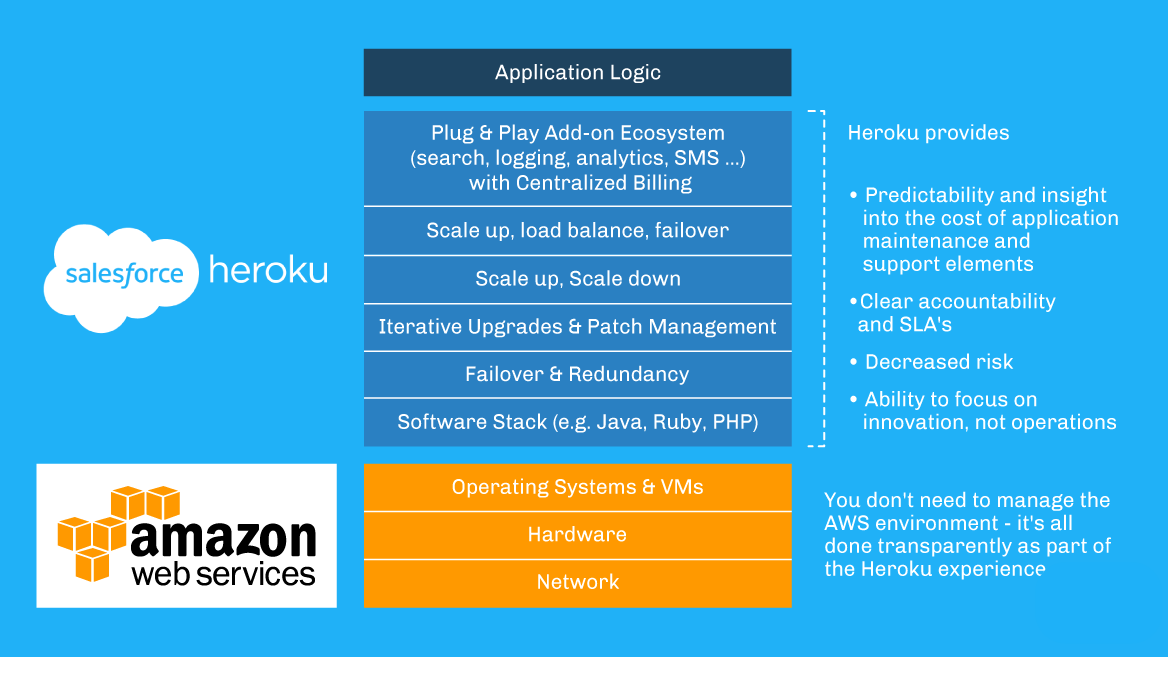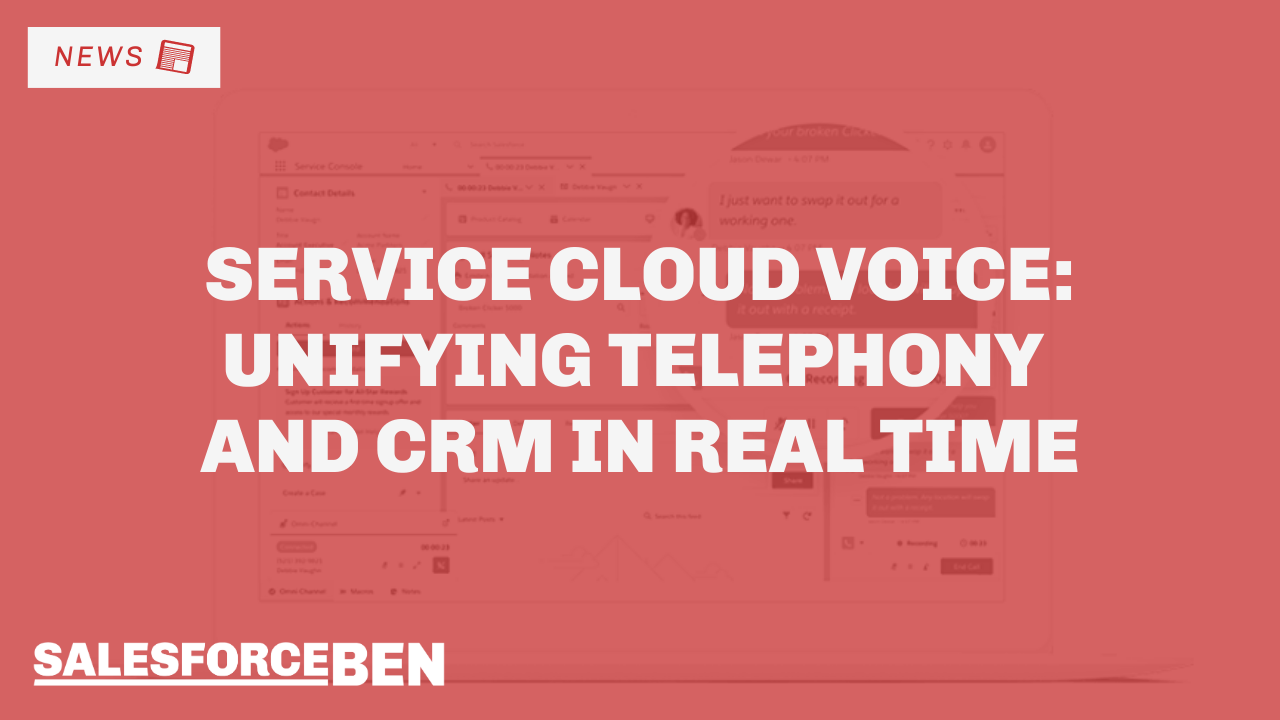AWS is the largest cloud services provider, with 32% market share and over 200 products. You already use AWS in your day to day life – and as a Salesforce customer, you are likely to leverage several AWS products without even knowing. While the Salesforce AWS integration makes little difference to you initially, your data and compliance teams will want to be aware!
The Salesforce AWS partnership was first announced in 2016, and my guess is that many Salesforce Admins, and others in the community, skipped over it because it didn’t capture their interest. This year, Salesforce and AWS announced an even tighter integration, which follows the low-code messaging Salesforce are promoting.
Why does AWS matter to Salesforce Admins? The short answer is that this partnership will make it easier to integrate AWS services with the Salesforce platform.
How the Salesforce platform leverages AWS is something I find interesting. So, let me take you on a tour, #AwesomeAdmin, to show you how Salesforce leverages AWS to benefit you, and your users.
1. Salesforce Platform
Salesforce has its own data centres across the world that service some customers running on the core platform (Sales, Service, Experience Cloud, etc). Salesforce uses AWS in regions where they don’t have their own data centres (eg. in Canada, India, Australia). Building your own data centers is not cheap, and so it makes sense to rent the services that AWS offers.
2. Salesforce Einstein
Most of the Einstein product ‘family’ uses AWS to host your data, including Einstein Predictions, Engagement Scoring, Einstein Bots, Object Detection, Language, Einstein Vision, Pardot Einstein, Account Insights, Opportunity Scoring, Lead Scoring, Article Recommendations…and the list goes on.
As with the platform servers, hosting on AWS makes even more sense for Einstein, as they can leverage all the benefits of AWS, such as unlimited processing or storage capacity.
3. Einstein Activity Capture
Salesforce claims EAC is the future of email integration “our long-term solution for syncing contacts and events”.
EAC leverages AWS to store all emails and files, so they don’t take up storage space in Salesforce. However, this does mean that you cannot report on emails/files using Salesforce reports, platform encryption is not supported, and they will be deleted after a certain period of time.
4. Heroku
Heroku, Salesforce’s PaaS (Platform as a Service), runs on top of AWS which simplifies infrastructure management for you.
While AWS is considered more IaaS (Infrastructure as a Service), Heroku comes with all the extra bells and whistles to simplify the deployment of new applications or starting a new server, because you run at capacity. It also shields you from the need to have someone maintaining the servers because all the upgrades and fixes are taken care of.
Plus, if you just want to play with it, or quickly put together an MVP (minimum viable product), you can run Heroku for free. AWS is also free, only for the first year.


5. Service Cloud Voice
Service Cloud Voice uses Amazon Connect as its telephony infrastructure, including advanced routing capabilities, language processing, voice or call recording transcription and storage in the AWS S3 bucket.
Why doesn’t Salesforce use Einstein technologies for some of those features, you may ask. My guess is that as AWS already included this technology, Salesforce decided to leverage it too. The main difference between Service Cloud Voice and using just the plain Amazon Connect integration is that Service Cloud Voice is more embedded into Service Cloud (a better user experience).
6. Salesforce Private Connect
Salesforce Private Connect is a paid add-on that allows you to connect to your own AWS instance in a secure, point-to-point way. This doesn’t go over the internet, but instead, directly between Salesforce and AWS servers.
7. Government Cloud Plus
Government Cloud complies with the strict FedRAMP regulations. The ‘standard’ version of Government Cloud runs on Salesforce infrastructure and maintains FedRAMP ‘Moderate Authority to Operate’ (along with other requirements). Government Cloud Plus runs on AWS GovCloud, and as a result, is authorized at the FedRAMP ‘High Impact Level’, the highest level of FedRAMP compliance. This small but important difference shows the level of data security and compliance the U.S. government requires.
8. Marketing Cloud & related products
Marketing Cloud and its products (Datorama, Social Studio, Interaction Studio, etc.) use AWS to host your data. Marketing Cloud also leverages AWS’s CDN (Content Delivery Network) to optimize content delivery across the world; this makes your customer experience faster because your pages, images or files are served from a location closest to the customer.


9. Hyperforce
Hyperforce is Salesforce’s initiative to allow their customers to deploy Salesforce to major public clouds. This will most likely support AWS as the underlying technology.
Large customers, especially those from the financial sector, are already running some of their technologies on AWS; being able to run and manage Salesforce as part of their technology stack is something very compelling to their IT teams.
10. Cloud Information Model
Cloud Information Model is an initiative run by AWS, Salesforce, IBM, Google, and others – so not a product or service, per se.
Thanks to this shared data structure, you can easily share data about a few basic entities such as the customer, sales order, or payment, which can then be used by any company. This makes information exchange easier, as one provider could store the customers first name, last name and mailing street, city and zip code in separate fields – yet another provider could have just one single field for name and one for the whole mailing address. When you want to connect to a different system, all the data transformation you need to do will be taken care of – magic!
Final Thought
While putting together this list, I was surprised by how many cases I use AWS without even knowing. Hopefully you’ve gained more understanding around how these two giants – Salesforce and AWS – can leverage each other to bring the best of both worlds to these Salesforce products.






Comments: